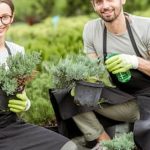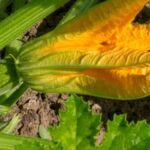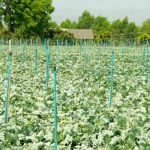Heirloom vegetables are not just a trend in gardening; they represent a rich history of varieties passed down through generations. In this age of mass-produced hybrid seeds, heirloom vegetables stand out for their unique flavors, colors, and adaptability. If you’re looking to delve into the world of heirloom vegetable gardening, consider exploring an ebook dedicated to this traditional method of cultivation.
The history of heirloom vegetables is intertwined with stories of heritage, resilience, and flavor. These plants have been cherished for their ability to adapt to specific climates and soil conditions over time. Understanding the origins and significance of heirloom vegetables can provide insight into why preserving these varieties is crucial for maintaining agricultural biodiversity.
Choosing to grow heirloom vegetables offers numerous benefits over hybrid varieties. Not only do they often boast superior taste and nutritional value, but they also contribute to preserving rare plant species. By starting your own heirloom vegetable garden, you can take part in a movement that values diversity, sustainability, and the connection between growers and their food.
History of Heirloom Vegetables
Heirloom vegetables have a rich history that dates back centuries, with each variety carrying its own unique story and significance. Unlike modern hybrid vegetables that are bred for specific characteristics, heirlooms are open-pollinated plants that have been passed down through generations.
These seeds have been carefully preserved and saved for their exceptional taste, diversity, and resilience. From the humble beginnings of family farms to community seed saving initiatives, heirloom vegetables have played an essential role in preserving biodiversity and cultural heritage.
To truly appreciate the value of heirloom vegetables, it is important to understand their historical roots. Many heirloom varieties have been cultivated for hundreds of years by farmers who selected the best plants each season for seed saving.
This careful selection led to the development of unique traits and flavors that set heirlooms apart from mass-produced hybrids. In addition to their superior taste, heirloom vegetables also offer a connection to the past and a sense of continuity with our ancestors who relied on these plants for sustenance.
The significance of heirloom vegetables goes beyond their nostalgia-inducing qualities. By cultivating and saving seeds from these traditional varieties, gardeners play a crucial role in preserving biodiversity and genetic diversity in our food supply. As monoculture crops dominate industrial agriculture, heirlooms serve as a reminder of the importance of maintaining a wide range of plant genetics.
They also offer resilience in the face of climate change and disease outbreaks, making them valuable resources for sustainable gardening practices. By growing heirloom vegetables in your garden, you not only enjoy delicious flavors but also contribute to the conservation of these living legacies for future generations.
Benefits of Heirloom Vegetable Gardening
Heirloom vegetables are not only a delight to grow in your garden, but they also offer numerous benefits over hybrid varieties. One of the primary advantages of growing heirloom vegetables is their incredible taste and flavor. Unlike many hybrid vegetables that are bred for uniformity, heirlooms have been passed down through generations for their exceptional taste, rich flavors, and unique characteristics. This diversity in flavors can truly elevate your culinary experience, making meals more enjoyable and rewarding.
In addition to their superior taste, heirloom vegetables often boast higher nutritional value compared to hybrids. Many heirloom varieties have been cultivated for their nutrient-dense properties, offering a range of vitamins, minerals, and antioxidants that may be lacking in conventional hybrid vegetables. By choosing heirloom vegetables for your garden, you can ensure that you are consuming fresh produce that not only tastes better but also nourishes your body with essential nutrients.
Furthermore, growing heirloom vegetables is a way to preserve biodiversity and support sustainable farming practices. Heirloom varieties are open-pollinated plants that have been carefully preserved over time, each with its own unique genetic makeup. By cultivating heirlooms in your garden, you are contributing to the conservation of rare and endangered plant species.
Additionally, by saving seeds from your heirloom crops, you can play a crucial role in preserving these valuable genetic resources for future generations. If you’re interested in learning more about the benefits of heirloom vegetable gardening and how to get started, consider exploring an heirloom vegetable gardening ebook for comprehensive guidance and insights on this rewarding practice.
How to Start Heirloom Vegetable Gardening
Are you interested in starting your own heirloom vegetable garden but not sure where to begin? Look no further. Here is a step-by-step guide to help you kickstart your journey into the world of heirloom vegetable gardening:
1. Choose the Right Location: Select a spot in your garden that receives ample sunlight (at least 6-8 hours per day) and has well-draining soil. Heirloom vegetables thrive in good soil, so ensure that the location you choose has rich, fertile soil for optimal growth.
2. Plan Your Garden Layout: Decide on what vegetables you want to grow based on your preferences and available space. It’s essential to plan ahead and consider factors such as companion planting, spacing between plants, and crop rotation to maximize productivity and prevent disease.
3. Prepare the Soil: Before planting, make sure to prepare the soil by removing any weeds, loosening the soil with a garden fork or tiller, and adding organic matter like compost or aged manure to enrich the soil with nutrients. Healthy soil is key to successful heirloom vegetable gardening.
4. Start Planting: Follow seed packet instructions for planting depth and spacing, or opt for purchasing seedlings from a local nursery for a head start. Remember to water your plants regularly and monitor their growth progress closely.
By following these simple steps, you’ll be well on your way to growing a bountiful harvest of delicious heirloom vegetables in your very own garden. For more in-depth guidance and tips on how to excel at heirloom vegetable gardening, consider checking out an heirloom vegetable gardening ebook Such resources can offer valuable information on plant care, pest control, seed saving techniques, and much more to enhance your gardening experience.
Best Heirloom Vegetables to Grow
Heirloom vegetables are not only cherished for their unique flavors and colors but also for their rich history and genetic diversity. When it comes to growing these special plants in your own garden, choosing the right varieties can make all the difference. Here are some of the best heirloom vegetables to grow that are not only easy to cultivate but also produce delicious crops.
One of the most popular heirloom tomatoes is the ‘Brandywine’ variety, known for its exceptional taste and large fruit size. Another favorite among gardeners is the ‘Black Krim’ tomato, which offers a unique smoky flavor. For those looking to add some color to their garden, ‘Purple Cherokee’ tomatoes with their deep purplish hue are a great choice. These heirloom tomato varieties not only thrive in home gardens but also provide a bountiful harvest throughout the growing season.
When it comes to heirloom peppers, the ‘Jimmy Nardello’s Sweet Italian’ pepper is a standout choice. This pepper variety is sweet and flavorful, making it perfect for adding a pop of color and taste to your dishes.
For those who enjoy a bit of heat, the ‘Hungarian Hot Wax’ pepper offers just the right amount of spiciness without being overwhelming. By incorporating these heirloom pepper varieties into your garden, you can enjoy a diverse range of flavors while supporting genetic diversity in vegetable crops.
| Heirloom Vegetable Variety | Characteristics |
|---|---|
| Brandywine Tomato | Large fruit size and exceptional taste |
| Purple Cherokee Tomato | Deep purplish hue and delicious flavor |
| Jimmy Nardello’s Sweet Italian Pepper | Sweet flavor and vibrant color |
| Hungarian Hot Wax Pepper | Moderate spiciness with versatile uses |
Maintaining Heirloom Vegetable Gardens
When it comes to maintaining heirloom vegetable gardens, proper care and nurturing are essential to ensure a bountiful harvest of flavorful produce. Unlike hybrid varieties, heirloom vegetables require specific attention and practices to thrive. One key aspect of maintaining heirloom vegetable plants is consistent watering.
Heirlooms generally have a lower tolerance for drought conditions compared to hybrids, so it is important to keep the soil consistently moist, especially during dry periods. Additionally, mulching around the plants can help retain moisture and prevent weeds from growing, which can compete with your heirloom vegetables for nutrients.
Another crucial aspect of maintaining heirloom vegetable gardens is soil fertility. Heirloom varieties benefit from nutrient-rich soil that provides the necessary minerals and elements for healthy growth. Consider using organic fertilizers or compost to enrich the soil and provide a steady supply of nutrients to your plants. Regularly testing the pH levels of the soil can also help you adjust and maintain optimal conditions for your heirloom vegetables.
Furthermore, pest management is a significant factor in maintaining heirloom vegetable gardens. Since many heirloom varieties do not have built-in resistance to pests like some hybrid plants do, it is important to regularly inspect your plants for any signs of pests or diseases. Implementing preventive measures such as companion planting, crop rotation, and natural pest deterrents can help protect your heirloom vegetables without relying on chemical pesticides that may harm the environment or beneficial insects.
| Aspect | Advice |
|---|---|
| Watering | Keep soil consistently moist; mulch around plants |
| Soil Fertility | Use organic fertilizers or compost; test pH levels regularly |
| Pest Management | Inspect plants regularly for pests; use preventive measures like companion planting and natural deterrents |
Remember that each variety of heirloom vegetable may have unique needs, so it’s essential to research specific care requirements for the types of plants you are growing in your garden. By following these tips on proper care and nurturing techniques for maintaining your heirloom vegetable gardens, you can enjoy a flourishing garden full of delicious and nutritious produce that honors traditional gardening practices passed down through generations.
And if you want more in-depth guidance on how to cultivate your own heirlooms successfully, consider exploring an heirloom vegetable gardening ebook that provides comprehensive information and techniques tailored specifically towards these treasured plant varieties.
Saving Heirloom Seeds
Preserving Biodiversity
One of the key reasons why saving seeds from heirloom vegetables is important is to preserve biodiversity in our food system. Heirloom vegetables are often open-pollinated, meaning they rely on natural pollinators like bees and wind for reproduction.
By saving seeds from these plants, gardeners help maintain genetic diversity within plant species, which is essential for ensuring resilience against pests, diseases, and changing environmental conditions. Additionally, preserving heirloom vegetable seeds contributes to safeguarding cultural heritage and traditional farming practices that have been passed down through generations.
Sustainable Agriculture
Saving seeds from heirloom vegetables also plays a crucial role in promoting sustainable agriculture practices. Unlike hybrid seeds that are bred for specific traits like uniformity or prolonged shelf life, heirloom varieties have evolved naturally over time to adapt to local growing conditions and climates.
By saving and replanting these seeds season after season, gardeners support a more sustainable approach to farming that reduces the reliance on chemical inputs and fosters a deeper connection to the land. This practice not only benefits the environment but also ensures a continuous supply of nutritious and flavorful produce for future generations.
Community Resilience
In times of uncertainty, such as climate change or disruptions in global food supply chains, having access to locally adapted heirloom vegetable seeds becomes increasingly important for building community resilience. By saving seeds from their own harvests and sharing them with neighbors or seed-saving networks, gardeners contribute to creating a diverse pool of plant genetics that can withstand challenges like extreme weather events or crop failures.
This sense of shared knowledge and resources strengthens local food security and empowers communities to become more self-sufficient in producing their own healthy and varied food sources. The act of saving heirloom seeds transcends individual gardens, fostering connections between people who are dedicated to preserving our agricultural heritage for future generations.






